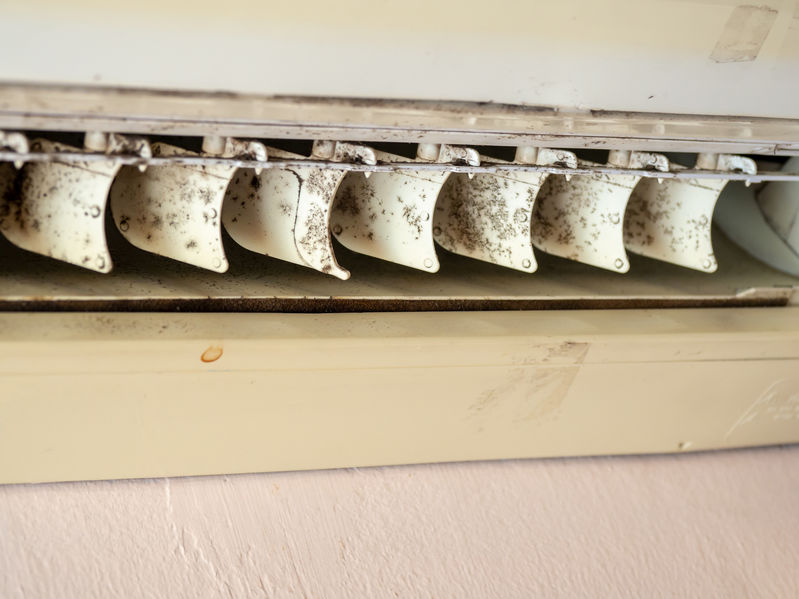Moldy Office Ventilation
The technology of climate control was created to provide us with a comfortable temperature in any inside environment, but it can be a big headache in some circumstances… literally. In fact, there’s been so many cases reported to the Environmental Protection Agency, that the term Sick Building Syndrome was coined.
Office buildings, classrooms, factories, and even hospitals have been known to experience migraines and headaches that are caused by moldy indoor vents and air conditioning.

Complaints are particularly common in some of the newer and more energy-efficient buildings where all windows are sealed closed, meaning there is not much fresh air making its way inside.
The Problem With Office Vents
While the main job of an office air conditioner is to cool down the air, it also simultaneously acts as a dehumidifier. This function is critical because cool offices that also feel humid will become a health hazard. Initially, it may cause foul odors in the short term, but eventually it will become an excellent breeding ground for a wide range of mold and mildew.
Because workers do not have control over the thermostat, excessive dehumidifying can be caused by powerful air conditioners. This often creates problem environments in many office buildings, especially ones that are otherwise unventilated. In fact, it’s been estimated that toxic mold and similar indoor pollutants contribute to more than half of many office worker’s illnesses, and are up to 5 times more dangerous in enclosed spaces than the same pollutants when outside in the fresh air.
Signs & Symptoms Of Toxic Mold
By far, the most common health issues that are caused by mold growing inside office building ventilation ducts are allergy related. These allergic reactions can include migraines or headaches, respiratory issues like coughing or wheezing, and a range of nasal irritations, as well as itchy, red, or watery eyes. If any workers already have respiratory conditions like asthma, or they suffer from seasonal or chronic allergies, they might experience allergic reactions to mold and mildew that are much more significant.
Backed Up By Research
Research has shown that workers inside office buildings can be affected by mold and fungi in any number of different ways. Mold can cause headaches and other health issues which occur as an allergic response. Black mold or Stachybotrys in particular has been found to cause illnesses in many office workers, with the most severe reaction being idiopathic pulmonary hemorrhages.
While some governmental agencies have gone on to publish some guidelines regarding the mold assessment and remediation in office building vents, most are unfortunately fairly general. That means that unless the most stringent mold removal and air filtration measures are carried out, health problems caused by mold, spores, and fungus will likely continue as they’ll be pretty much unavoidable.
If your office building has a musty smell, or your workers are constantly complaining of headaches or migraines, talk to the professional mold experts from Certified Mold Assessments today.
